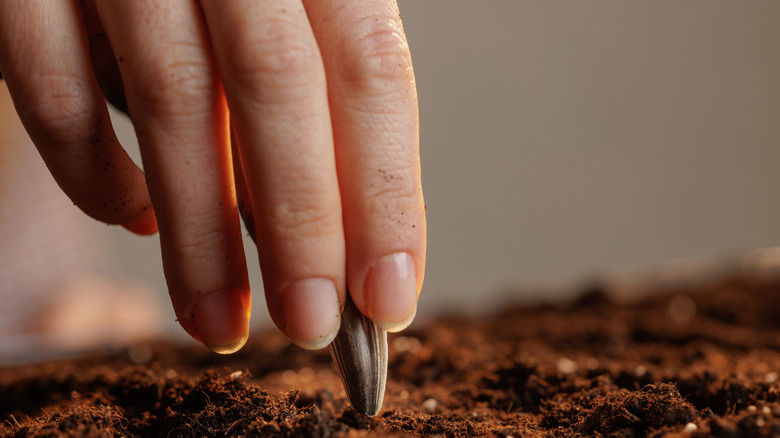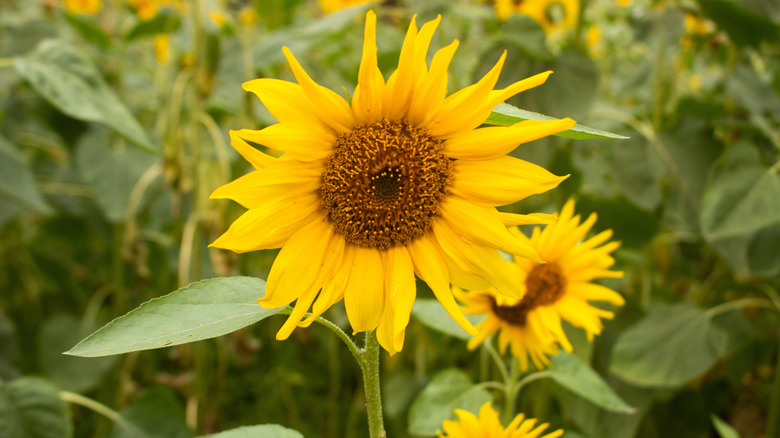Where To Grow Sunflowers For The Healthiest Plants Possible
Sunflowers' massive blooms can bring a smile to any face and brighten up any landscape. While they aren't difficult plants to grow, and can even make a good plant for beginner gardeners, it's essential to plant them in the right spot for the best flowers. This requires finding or building them a location with plenty of sun, well draining soil, and moderate fertilization.
Of course it's not just the health of your sunflowers you need to consider. If you're growing other plants in your garden you also need to consider their well-being. This is because sunflowers (Helianthus annuus) exhibit allelopathy. This means that they produce chemicals which prevent other nearby plants from growing well. So while a spot of honor in the middle of your vegetable garden may be perfect for your sunflower, the nearby veggies aren't likely to appreciate it. The last thing you want is for your sunflowers to be the reason your other plants are suffering. But as long as you grow your sunflowers either in their own container or several feet away from other plants, this shouldn't be an issue.
Where to grow your sunflowers
The biggest thing sunflowers need in a growing location is right in their name — sun. For the best blooms make sure they're planted in a spot where they can enjoy at least 6 to 8 hours of direct sunshine a day. Of course, it isn't just bright light that sunflowers need to grow, they also benefit from well-draining soil, ideally with a neutral to slightly acidic pH. While you should perform a soil test to check the health of your soil before fertilizing, sunflowers also generally benefit from applications of a balanced slow release fertilizer.
Growing the best sunflowers isn't just about where you plant them though, it's also about when. Sunflowers struggle with cold soil and frost, so it's important to wait until after your last frost has passed and your soil temperature has warmed to around 60 degrees Fahrenheit to plant. If you want to get a head start on your sunflower crop, you can always start them inside and transplant the seedlings outside once weather permits instead of direct sowing the seeds. (Don't forget to harden off your young plants if you opt to do this.) Because many sunflowers only produce one massive flower per plant, you may want to succession sow your these beauties, ensuring you and your local pollinators have massive blooms to enjoy all season.

